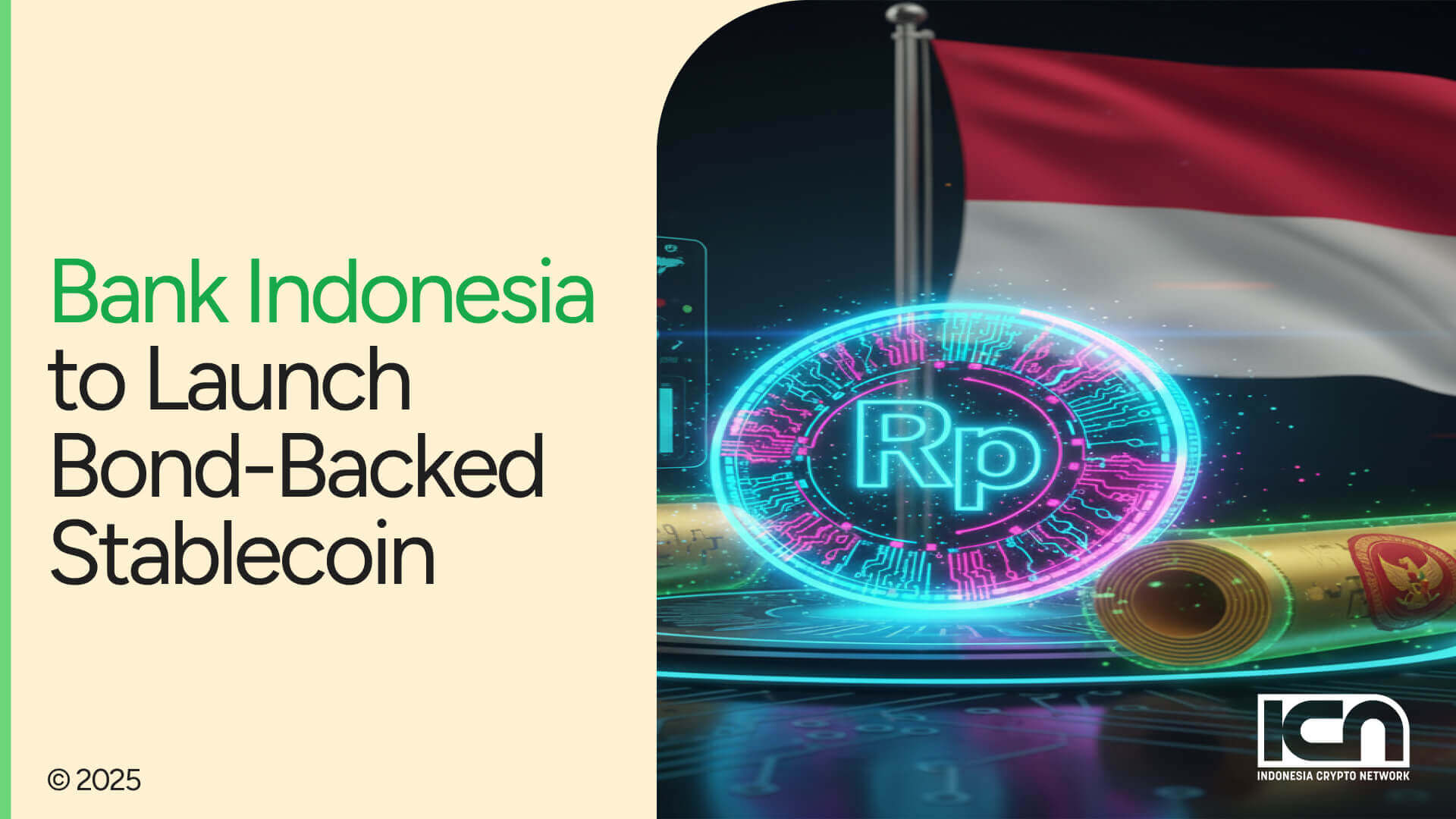Bank Indonesia (BI) is preparing a plan to issue a national stablecoin backed by government bonds (SBN) and linked to the Digital Rupiah, the country’s forthcoming central bank digital currency (CBDC).
Governor Perry Warjiyo said the idea is part of BI’s long-term strategy to explore blockchain-based innovation within Indonesia’s financial system. The plan was introduced during the Festival Ekonomi Keuangan Digital Indonesia and the Indonesia Fintech Summit & Expo 2025 at the Jakarta International Convention Center on Thursday (October 30, 2025).
Perry explained that the initiative is part of BI’s broader effort not only to develop the Digital Rupiah but also to introduce digital securities as a derivative of it, with Government Bonds (SBN) serving as the underlying asset.
“We will issue how Bank Indonesia securities will look — we have the digital version, the Digital Rupiah of Bank Indonesia with the underlying SBN, and Indonesia’s national stablecoin version,” said Perry, quoted from Coinvestasi.
He emphasized that the plan remains under study and will require time before any implementation can take place. The initiative aims to ensure that blockchain-based innovation grows in line with Indonesia’s monetary sovereignty and regulatory structure.
Read more: Bank Indonesia Marks Major Milestone with Rupiah Digital Proof of Concept
Connecting the National Stablecoin, Digital SBN, and Project Garuda
Although interconnected, the national stablecoin, digital SBN, and Digital Rupiah each serve distinct purposes in Indonesia’s evolving digital-finance landscape.
The Digital Rupiah, developed under Project Garuda, is BI’s official central bank digital currency — a blockchain-based form of the Rupiah that will serve as legal tender. Meanwhile, digital SBN, or tokenized government bonds, aim to modernize state securities and make public-debt management more transparent and efficient.
The national stablecoin sits conceptually between these two instruments. Unlike private stablecoins such as USDT or USDC, which are issued by commercial entities and backed by external reserves, Indonesia’s proposed version would be state-issued and transparently backed by government bonds (SBN).
This design, still under development, seeks to ensure stability and accountability by integrating blockchain efficiency into the formal financial system while maintaining monetary sovereignty under BI’s oversight. In essence, the national stablecoin would act as a bridge between traditional finance and the digital economy — though realization will take time and careful preparation.
Read more: Top Licensed Crypto Exchanges in Indonesia (2025 Edition)
Still in the Development Stage
According to BI and local media reports, the stablecoin plan is still being prepared and studied as part of the wider Project Garuda roadmap. No specific timeline has been announced, as the framework remains in its early design phase.
The plan aligns with BI’s goal to ensure that digital financial innovation including blockchain-based assets and tokenized securities supports Indonesia’s monetary policy objectives and financial stability.
Even at this preliminary stage, the discussion positions Indonesia among a growing number of nations exploring hybrid models that combine the trust of central-bank-issued money with the efficiency of blockchain-based systems.
Read more: Indonesia’s 2024 Crypto & Web3 Report: What You Need to Know
Start Growing with ICN
At ICN, we believe developments like these represent the beginning of a transformative era for Indonesia’s digital economy. As blockchain technology, finance, and regulation continue to converge, opportunities for growth and innovation are expanding faster than ever.
Whether you’re an investor, policymaker, or innovator looking to understand emerging trends, ICN connects you with reliable insights, market intelligence, and data-driven perspectives to navigate Indonesia’s evolving financial landscape. Start Growing with ICN — discover the future of digital finance today.




